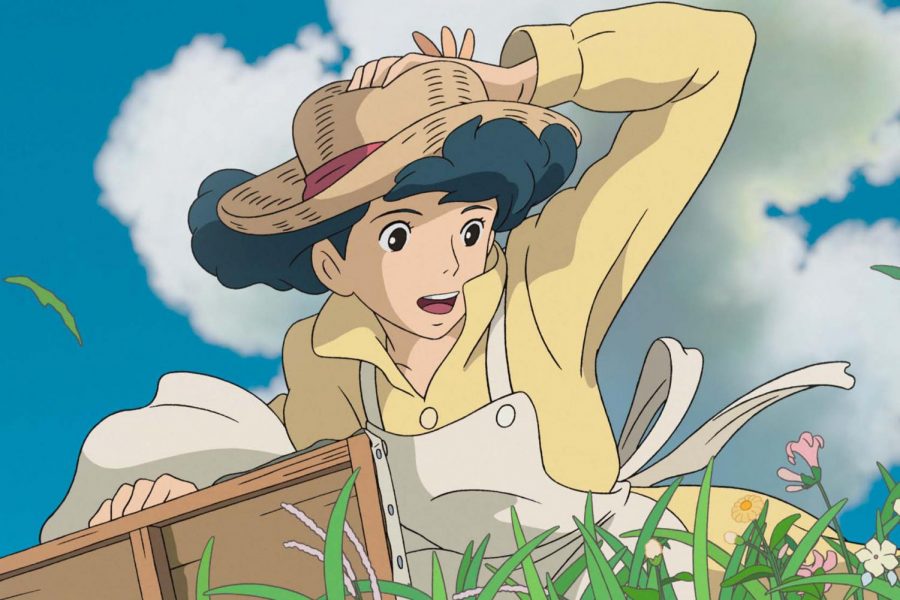Miyazaki offers dark twist to outstanding career
March 10, 2014
Traditional animation is becoming unfashionable in the United States. Changing tastes have given rise to computer-generated films like the Oscar-winning “Frozen” in favor of Disney’s near-extinct hand-drawn anima- tions. However, Japanese writer/director Hayao Miyazaki’s latest and reportedly last film, “The Wind Rises,” flies in the face of this Western trend. Once again, the genius behind Studio Ghibli has created a film that provokes wonder and awe in audiences of diverse cul- tures. While it may not be Miyazaki’s most outstanding film, it is one of his most complex and moving works to date.
The film begins just before World War II and continues throughout, following the life of Japanese boy Jiro Horikoshi (voiced by Joseph Gordon-Levitt), who dreams of the freedom of flight. However, his poor eyesight keeps him grounded, so he must find other ways of pursuing his passion. Jiro admires Italian aeronautics designer Caproni (voiced by Stanley Tucci), and in his dreams, the two talk of aviation and its ability to inspire.
Jiro begins to develop planes for the Japa- nese air force and much of the film deals with the struggle between his artistic devotion to aircraft design and his country’s desire to use his work for war.
Jiro’s character arc is visually expressed through the film’s gradual shift in artistic style during the dream sequences. Dreams become an important interpretation of Jiro’s changing attitude toward his craft and coun- try as his experiences grow. At the beginning of “The Wind Rises,” Jiro is naive with his in- nocence reflected through colorful, sweeping dreams of soaring with birds. Yet toward the latter half of the film, his imaginative mind becomes cynical. In darker dreams, Jiro feels guilt about what his planes will be used for when Caproni judges him for what he has just done.
When he grows older, Jiro discovers during a trip to Nazi Germany the world is much harsher than he imagined. Miyazaki deftly handles Jiro’s pivotal time in Germany. A scene in which he realizes his planes will be used to support a fascist regime is especially impactful. Jiro may have noble intentions for his planes, but it matters little to those in power.
Additionally, “The Wind Rises” acts as a piercing social commentary on the con- flicting emotions between morality and na- tionality during wartime. In several scenes with his best friend and fellow designer Honjo (voiced by John Krasinski), Jiro dis- cusses his patriotism and chagrin regard- ing the destructive path Japan is on. He laments the country’s archaic ideas aboutthe world and technology, noting in his visit to Germany that their planes are far more advanced than Japan’s.
Americans may feel conflicted with “The Wind Rises.” On the surface, it is the story of the man who developed planes used against U.S. troops in WWII. However, the themes are universal and the film is a gripping criti- cism of humanity’s tendencies toward op- pression and greed.
The movie illustrates the fine line between criticism and animosity. Jiro finds fault with the practices he sees as morally objection- able, and his wanting his country to reflect his ethics is justifiable. The audience can em- pathize with Jiro’s often-ignored resistance. One of the film’s few comedic moments is when he explains to fellow engineers that the planes would fly better without guns attached because of uneven weight distribution.
Beauty contrasts with tragedy in all as- pects of Jiro’s life, even in an engaging love story between him and Nahoko Satomi (voiced by Emily Blunt). The way the two come together is idyllic as she recites poetry to Jiro on a train after keeping his hat from blowing away. He is quickly enthralled, but the relationship changes as Nahoko develops tuberculosis and Jiro wonders if he will ever be truly happy.
The animation that brings Jiro’s work and dreams to life is astounding. Trees and grass sway in the wind and characters’ faces are ex- pressive and fluid, helping audiences become immersed in the wondrous aspects of Jiro’s dense world. Even simple static shots are more akin to an oil painting than a traditional work of animation.
It is a shame that the audio does not match the visual fidelity. The English dub is emo- tionally flat. Gordon-Levitt does his best at giving a subtle performance, but most of the supporting cast is unintentionally comical during dramatic scenes. Martin Short espe- cially stands out, doing his best cliche’ “angry boss” impression of Jiro’s superior, Kuroka- wa. The man is supposed to be intimidating and gruff, but will have audiences smirking at his unintentional awkwardness.
The film’s greatest strength is also a weak- ness. It tells a more painful story than all of Miyazaki’s previous works. There are no wondrous automatons like in “Howl’s Mov- ing Castle,” and no fairy-tale ending like in “Princess Mononoke.” Audiences may find the serious subject matter disturbing and un- familiar for an animated film.
The purpose of this Miyazaki film is to in- form rather than amaze. For once, the anima- tion is merely the medium to tell a rich dra- ma rather than being the subject itself. The change makes for a fitting but surprising end.








